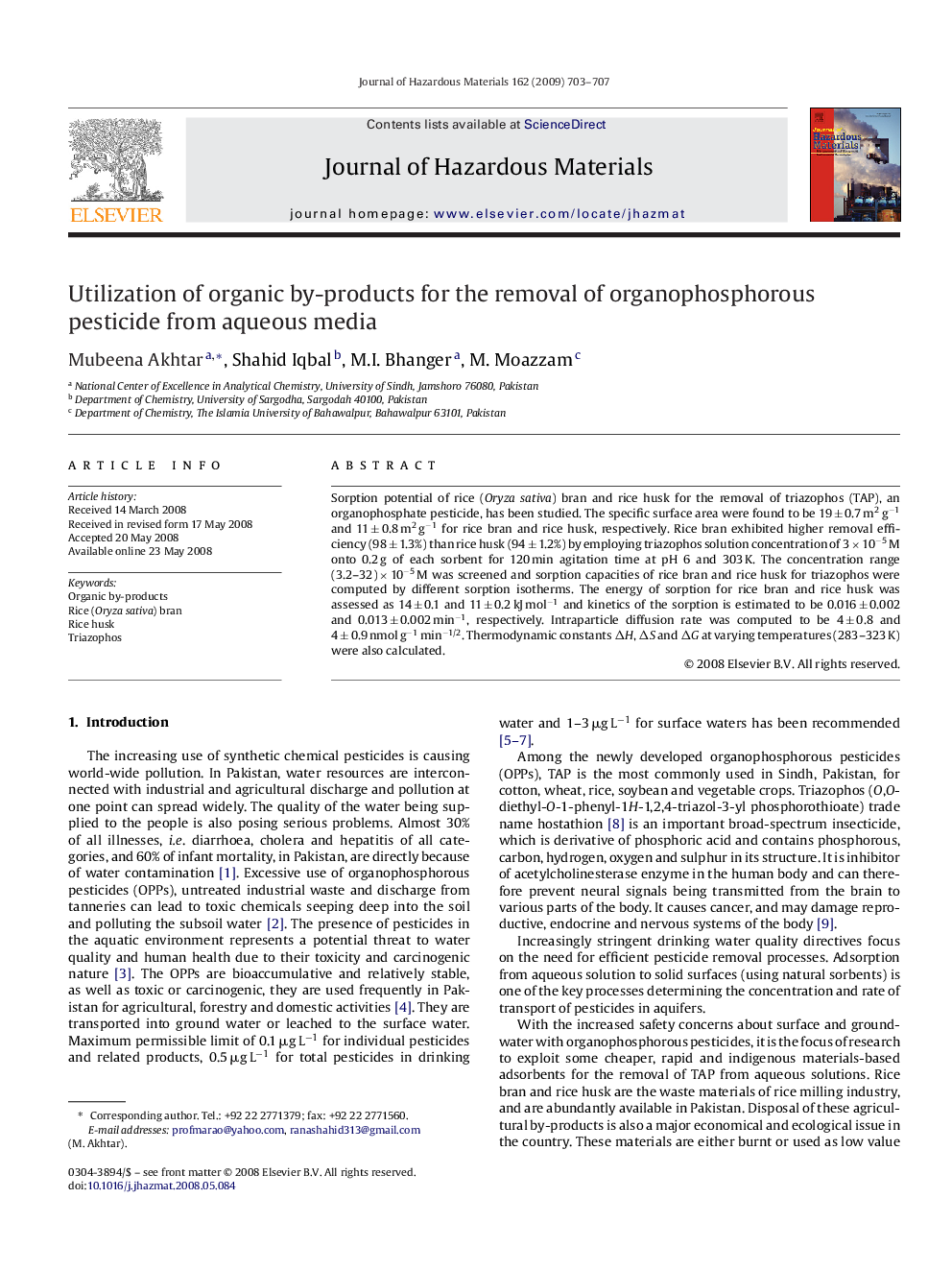| Article ID | Journal | Published Year | Pages | File Type |
|---|---|---|---|---|
| 582351 | Journal of Hazardous Materials | 2009 | 5 Pages |
Abstract
Sorption potential of rice (Oryza sativa) bran and rice husk for the removal of triazophos (TAP), an organophosphate pesticide, has been studied. The specific surface area were found to be 19 ± 0.7 m2 gâ1 and 11 ± 0.8 m2 gâ1 for rice bran and rice husk, respectively. Rice bran exhibited higher removal efficiency (98 ± 1.3%) than rice husk (94 ± 1.2%) by employing triazophos solution concentration of 3 Ã 10â5 M onto 0.2 g of each sorbent for 120 min agitation time at pH 6 and 303 K. The concentration range (3.2-32) Ã 10â5 M was screened and sorption capacities of rice bran and rice husk for triazophos were computed by different sorption isotherms. The energy of sorption for rice bran and rice husk was assessed as 14 ± 0.1 and 11 ± 0.2 kJ molâ1 and kinetics of the sorption is estimated to be 0.016 ± 0.002 and 0.013 ± 0.002 minâ1, respectively. Intraparticle diffusion rate was computed to be 4 ± 0.8 and 4 ± 0.9 nmol gâ1 minâ1/2. Thermodynamic constants ÎH, ÎS and ÎG at varying temperatures (283-323 K) were also calculated.
Related Topics
Physical Sciences and Engineering
Chemical Engineering
Chemical Health and Safety
Authors
Mubeena Akhtar, Shahid Iqbal, M.I. Bhanger, M. Moazzam,
